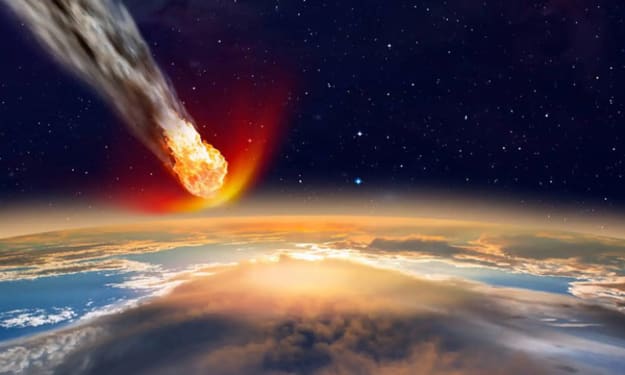The Arctic is silently "dying"
Research vessel drifts thousands of kilometers to bring back bad news

As a geographical region, one of the two poles of the Earth, the Arctic will "die" one day. It may sound unbelievable, but after 389 days of drifting in the Arctic, the sadness of the research vessel is certainly strong proof that the Arctic is indeed "dying" silently.
The Polarstern's discovery
With the advancement of human technology, human footprints are gradually being made in the hard-to-reach areas of the earth. The establishment of Antarctic research stations is one example. Compared to the cold climate of the Antarctic and the ice layer of nearly 2,000 meters, the Arctic is easier to investigate, after all, there are still Inuit people living in the Arctic.
Therefore, to better examine the Arctic Earth, more than three hundred scientists from nineteen countries around the world have come together on board the Polarstern polar research vessel to implement an Arctic fieldwork program.
The expedition ship set off on September 20, 2019, in Norway, ready to take advantage of the upcoming extensive ice cover in the Arctic to help move. In October, floating ice gradually transformed into a sheet of ice 560 kilometers from the North Pole and began to wrap around the scientists.
The scientists took advantage of the ice drift and traveled thousands of kilometers in the Arctic, taking a total of 389 days. During this year-long period, they collected information on all aspects of the Arctic's oceans, storms, and ecosystems. However, the more information they got, the heavier their mood became instead.
The environment of the Arctic Earth is too unpromising. As a region that can not be exposed to sunlight all year round, its sea ice area is shrinking drastically, only forty years, it has reached the second lowest in history. Not only that, but the ice in the Arctic is also gradually becoming thinner.
The Arctic ecosystem has also changed significantly as a result of the reduction in sea ice. Polar bears, which feed on the fish and shrimp beneath the ice floes, are gradually becoming more yellow and thin. In Siberian cities, polar bears have even been spotted.
In addition, the rocks in some parts of the Arctic are beginning to be exposed.
All these signs put the changes in the Arctic on top of global warming. More than 40 years ago, when humans first started satellite monitoring in the Arctic, cold and glaciers were still the main features of the Arctic.
But as society evolves, the Arctic is refreshing our perceptions of it at a rapid pace. When the Arctic looks different, is it a sign that the Arctic is "dead"?
Of course, what worries scientists is not only the environmental and ecological changes to the Arctic but also the global and human impacts of the changes.
The impact of a "dead" Arctic
Just as the "death" of the Arctic did not happen overnight, the global impact of Arctic change has been slow, but it has been a mixed blessing.
The good
The greatest benefit of the reduced Arctic sea ice and melting glaciers is the opening up of new shipping lanes. In the age of navigation, humans have also set foot in areas such as Greenland, but the glaciers and the harsh climate were a deterrent.
If the Arctic sea ice melts, then it will not be as warm as Murmansk to the Atlantic Ocean's warm currents all year round, but the Atlantic warm currents can affect the Arctic more northern areas so that the world can be in the summer and other times through the Arctic Ocean shipping lanes to achieve a shorter distance of sea trade.
For example, Japan to London had to travel from the Pacific Ocean through the Strait of Malacca to the Atlantic Ocean and then through the Mediterranean Sea to London, England. But after the opening of the Arctic Ocean shipping route, it was able to reduce the voyage by 16,000 kilometers. This greatly facilitated the maritime trade journey of the countries on the west coast of the Pacific Ocean.
However, such benefits are not worth mentioning compared to the negative effects caused by the Arctic Ocean.
The bad
First, a series of changes in the Arctic could exacerbate global warming. After the sea ice disappears, the sun's heat will be absorbed by seawater, causing further loss of sea ice, thus entering a vicious cycle and accelerating the rate of glacial melting in the Arctic. However, the Arctic contains a lot of methane under the glaciers. As a more powerful greenhouse gas than carbon dioxide, methane escapes from the ice and greatly exacerbates the warming process.
Under the cycle, the Arctic glaciers will melt further. This is likely to lead to a rise in seawater levels and a rise in sea levels, which will put coastal cities at great risk.
Second, the Arctic ecosystem will be destroyed and the Earth's biodiversity will be reduced again. Arctic foxes and polar bears, which are unique to the Arctic region, may be unable to adapt to their environment because of the melting sea ice and will gradually disappear from the earth.
The first effects may be more small-scale, but when scientists find "fresh" carcasses under the ice in the Antarctic, they have to make humans cautious. In the Arctic, as the permafrost thaws, scientists have found many dead animals left behind from ancient times, such as the mammoths we are most familiar with.
These prehistoric animals were frozen for years, so the body did not decay, not only that, some prehistoric animals look very "fresh" meat. Since the remains of prehistoric animals can be preserved intact, it suggests that the germs they carried can also be preserved.
If this is the case, the germs from tens of thousands of years ago would be a catastrophe for humans if they survived in today's times. Three years of new crowns are still affecting people's lives today, and unknown ancient viruses will be even more difficult to deal with.
The "death" of the Arctic will not happen overnight, but there are signs that it is undergoing a dramatic transformation. 2020, with the highest temperatures in the Arctic already reaching 38°C, is a sure sign that the Arctic will be "dead" in a very short time if humans continue to develop unchecked. "Death".
At that time, the rising sea level and the emergence of unknown viruses will become a major problem for mankind.
When our civilization has reached a certain level of development, perhaps we should stop to take into account our living environment and win a better future for the earth with a more environmentally friendly and green lifestyle.
About the Creator
Karen Gillanah
The aggravation that can be told is not aggravation; the lover that can be snatched away is not a lover.






Comments
There are no comments for this story
Be the first to respond and start the conversation.